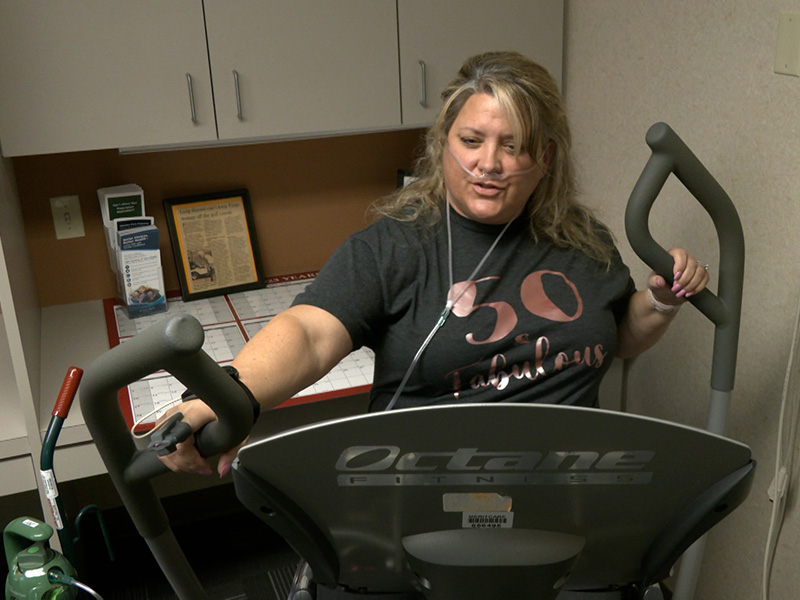In November of 2021, Shawna Grierson-Friesen of Frazee, Minnesota, left her fifth grade classroom with COVID-19.
“I thought I would return in a week … haven’t been back since,” said Grierson-Friesen. “I ended up going into the ER that day and my thoughts and opinion was, ‘OK, just give me some oxygen and we’ll get outta here.’ Then they decided that they were going to run some more tests. When they ran tests, they found double lung pneumonia, they found sepsis, and they found cytokine storm in my body.”
Grierson-Friesen was hospitalized. She required oxygen constantly. But even after she went home, things didn’t get much better. Now, more than a year after she first felt sick, she is considered a COVID long-hauler.
“She still has residual scarring and fibrosis of the lung, and her lung function has still not recovered,” said Venkatkiran Kanchustambham, M.D., a pulmonologist at Sanford Fargo.
“(Tests) still show reduced lung function, and unfortunately what we know over the last few years is that people who have had initial severe illness, their likelihood of a prolonged and slow recovery is much, much higher.”
Brain fog and fatigue
Though her depleted oxygen levels threatened her life, Grierson-Friesen’s long-haul symptoms have not been confined to her lungs. She also had what is referred to as “brain fog.”
“I started to lose my memory. I had no idea who came to visit me. I forgot. I did not know where I put my water bottle,” said Grierson-Friesen. “I struggled with reading left to right. I started to learn I couldn’t do math after a while. I couldn’t write my name.”
She also struggled with motor skills.
“I tried to make my own toast and the bread went on the floor. The knife was somewhere else because I couldn’t spread it. I couldn’t cut chicken,” said Grierson-Friesen. “It was a struggle.”
Dr. Kanchustambham says that along with the lung and brain fog issues, about 80% of COVID long-haulers like Shawna have symptoms of fatigue as well, which can manifest in many different ways.
“It’s not just physical exertion. It’s emotional, mental exertion. So sometimes watching TV, using your phone, reading a book, listening to something, anything can set off this fatigue,” said Dr. Kanchustambham.
Physical therapy and beyond
Grierson-Friesen now works with a physical therapist at Sanford Fargo, making sure she has someone with her to help watch her lung functions while she tries to build herself back up. Even that can be tricky though.
“With post-COVID, the more you push, the worse you get, the longer it takes to recover,” said Dr. Kanchustambham. “The reason for that is because with post-COVID, the main issue is that you are having issues keeping up with your energy levels. We know that if she’s pushing to a point where the heart rates are significantly high or she’s desaturating, we cut back.
“So that’s where the rehab comes into picture, where we try to make people go through rehab so that someone is watching them, someone is watching to see how much can she do, that when her heart rates are high, we cut back.”
For her part, Grierson-Friesen is committed to getting better. For more than a year, her goal has been to get back to teaching. And while Dr. Kanchustambham says that the residual scarring and fibrosis in her lungs could mean her recovery takes years, she is bolstered by the progress she has made thus far.
“I was struggling, having to have oxygen 24/7. I would not be able to have a conversation with you like I am today,” said Grierson-Friesen.
“I’m making some progress. I continue to set goals every week, every day. Some days I don’t get up and out of bed or leave the house. Some days I do. I’m confident that I’m going to continue to make progress, and I’m not going to stop until I’m there.”
Learn more
…
Posted In COVID-19, Fargo, Pulmonology, Rehabilitation & Therapy

